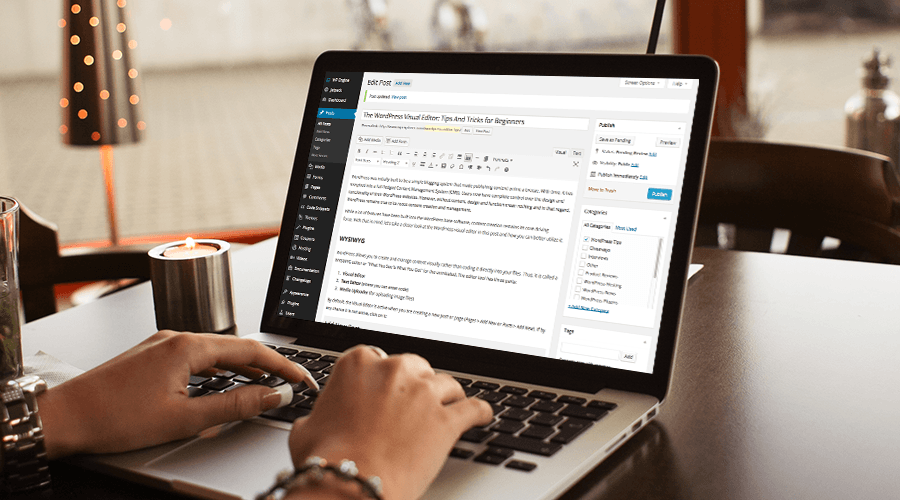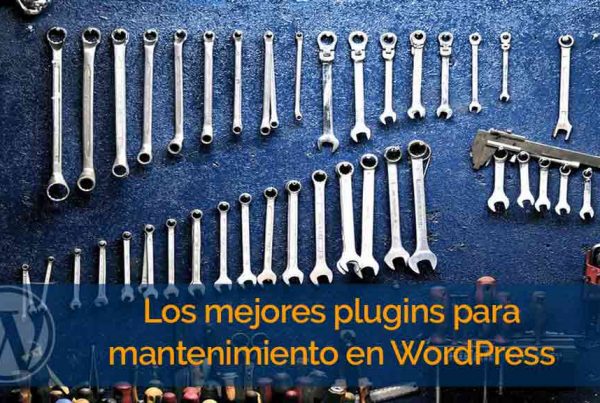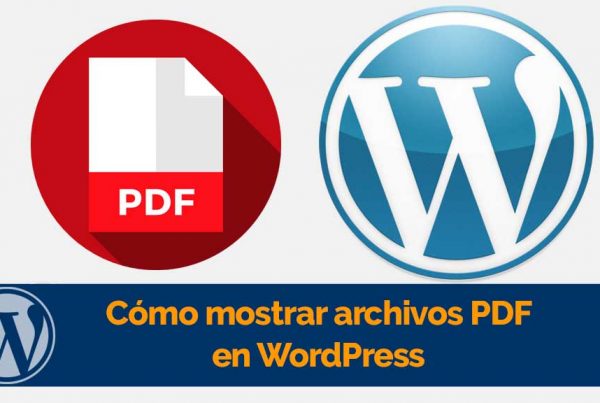WordPress se construyó inicialmente para ser un sistema de blogs simple que facilitó la publicación de contents en línea. Con el tiempo, se ha transformado en un sistema de administración de contenido (CMS) completo. Los usuarios ahora disponen un control completo sobre el diseño y la funcionalidad de sus sitios Web de WordPress. A pesar de todo, sin contenido, el diseño y la función no significan nada y, en ese sentido, WordPress se mantiene fiel a sus raíces: creación y administración de contenido.
Aunque se han integrado muchas funciones en el software base de WordPress, la creación de contenido sigue siendo su principal fuerza impulsora. Con eso en mente, echemos un vistazo más de cerca al editor visual de WordPress en esta publicación y cómo puede utilizarlo mejor.
WYSIWYG
WordPress allows you to create and manage content visually rather than directly encoding it in your files. Thus, it is called a WYSIWYG editor or "What you see is what you get" for the uninitiated. The editing tool has three parts:
- Visual editor
- Text editor (where you can enter code)
- Media Uploader (to upload image files)
By default, the Visual Editor is active when you are creating a new post or page (pages > Add new or Publications > Add new). If by any chance it is not active, click on it:

WYSIWYG significa que lo que ves en el Editor visual mientras editas tu publicación es lo que aparecerá en la publicación publicada. El Editor de texto le permite entrar texto sin formato y además le permite entrar código (marcado HTML) de forma directa como si estuviera trabajando con el archivo HTML real. Lo activas haciendo clic en el Text tab at the far right of the editor:

Media Uploader does exactly that - it uploads media files to Media Library so you can insert them into your posts however you want:

Con esta breve introducción al poderoso editor visual de WordPress, veamos ahora cómo puede utilizar algunos botones clave para crear y editar contenido. Estoy utilizando el tema de Blogger de nuestra colección de regalos para las ilustraciones.
Add text
The first thing is to open a new page or post and open the visual editor: Go to Publications > Add new. By default, you will see a condensed toolbar when creating a new post:

Click on the Kitchen Sink icon to reveal other formatting options on the toolbar:

For basic content creation and management, the above format alternatives will work fine. Even if you are new to WordPress, most of the icons will be familiar to other text editors like Microsoft Word. Actually all icons on the visual editor toolbar perform the same function as identical icons in Microsoft Word, therefore I have chosen the less familiar ones to discuss.
To add text, you basically write your content in the editor window. Regardless, sometimes it is feasible that your content has already been typed somewhere, and in that case, you can basically paste it as plain or Word-formatted text using these buttons on the toolbar:

Using this path is quick and the visual editor does a good job of preserving much of your Word formatting, better than standard copy and paste, at least. Regardless, as you will soon discover, it is not a flawless job and can sometimes end up with shredded text. I find it much easier to paste as plain text and then format within the visual editor.
Clear your text formatting
As we have seen or as you will see when you experiment with these formatting buttons, the visual editor has weaknesses when it comes to handling formatted text imported from other text editors. In this way, you may find that working with plain old text is the best thing to do. This is the button you should use to clear the formatting of the imported text:

Resalte su texto y haga clic en ese botón. Su texto ahora tendrá el formato predeterminado de su tema. Tenga en cuenta que este botón no funciona para algunos tipos de formato, como citas en bloque y headers. Hay otros botones de formato que se encargan de esos tipos.
Change the type of text
You will have various types of text in your document, including paragraphs and headings. To change your text type, highlight the portion of text you want to modify and click the formatting drop-down menu at the far left of the editor toolbar. Select the format you want and you're done:

You can of course format your posts any way you like, but make sure there is some structure in place for consistency. Section headings, for example, should have the same heading format, such as Title 2, while the main header is usually Title 1. At the same time, the standard paragraph text should be formatted by default, as well as the pre-formatted text and addresses.
Remember: the default formats for different types of text depend on your theme. Each theme comes with its own default style for the types you see in the format drop-down box.
Use the Paragraph type in the drop-down box to clear the formatting of the headers, since Clear format The button does not work for headings and bulk citations.
Use the Blockquote To format or delete the bulk citation format:

Full screen editing

If you like to work with minimal distractions, you will find the ideal full screen mode for you and this is the button that activates it. It basically closes all the nonessential stuff on the screen and leaves you with just the content box and a condensed toolbar that automatically hides and appears when you hover over the page.
Insert more label

Aunque esta es una característica del editor visual que usualmente se pasa por alto, es muy útil cuando se trata de mostrar extractos de publicaciones en su Blog. Como ya sabe, si ha hecho público publicaciones en su blog, WordPress muestra extractos de estas publicaciones en las páginas de inicio y archivos. A pesar de todo, WordPress trunca los extractos al azar y esto podría estar en medio de una oración.
This is where the ingenious Insert more The tag function is useful. It allows you to specify precisely where the statement will end up. A link will be inserted pointing to the full post where you specified the excerpt to end. There are many ways to format this tag, but remember that by default it only works for posts (not pages):
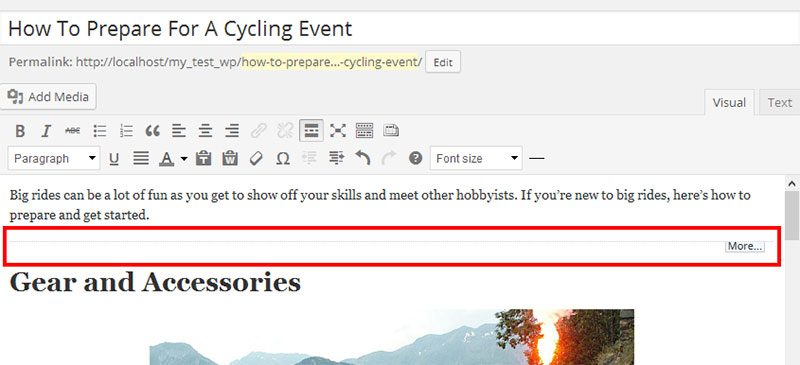
Note: Using the Insert more tag is based on the support of the chosen theme. Most of the carefully developed themes support it, but some do not.
Add and remove links

Inserting and deleting links is also easy with these buttons. They are inactive by default until you highlight the text you want to convert into the link. The button on the left adds a link, while the button on the right removes the links.
Special characters

If you've ever used the special characters button in Word, this should also be familiar to you. Despite everything, this one is more intuitive since it shows the HTML and NUM codes of a character when hovering over it:
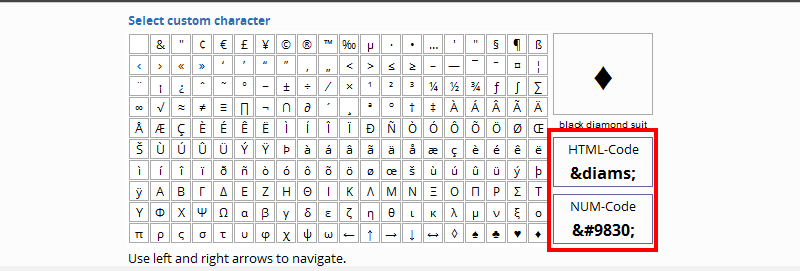
If is one Username usual de WordPress, es probable que ya esté familiarizado con la mayoría de las cosas que hemos visto anteriormente, pero para los nuevos usuarios de WordPress, esta debería ser una guía de inicio útil para el editor visual de WordPress; sus capacidades así como sus limitaciones.
Also, I would like to hear from you how you use the visual editor. Do you have any tips or tricks you would like to share?

